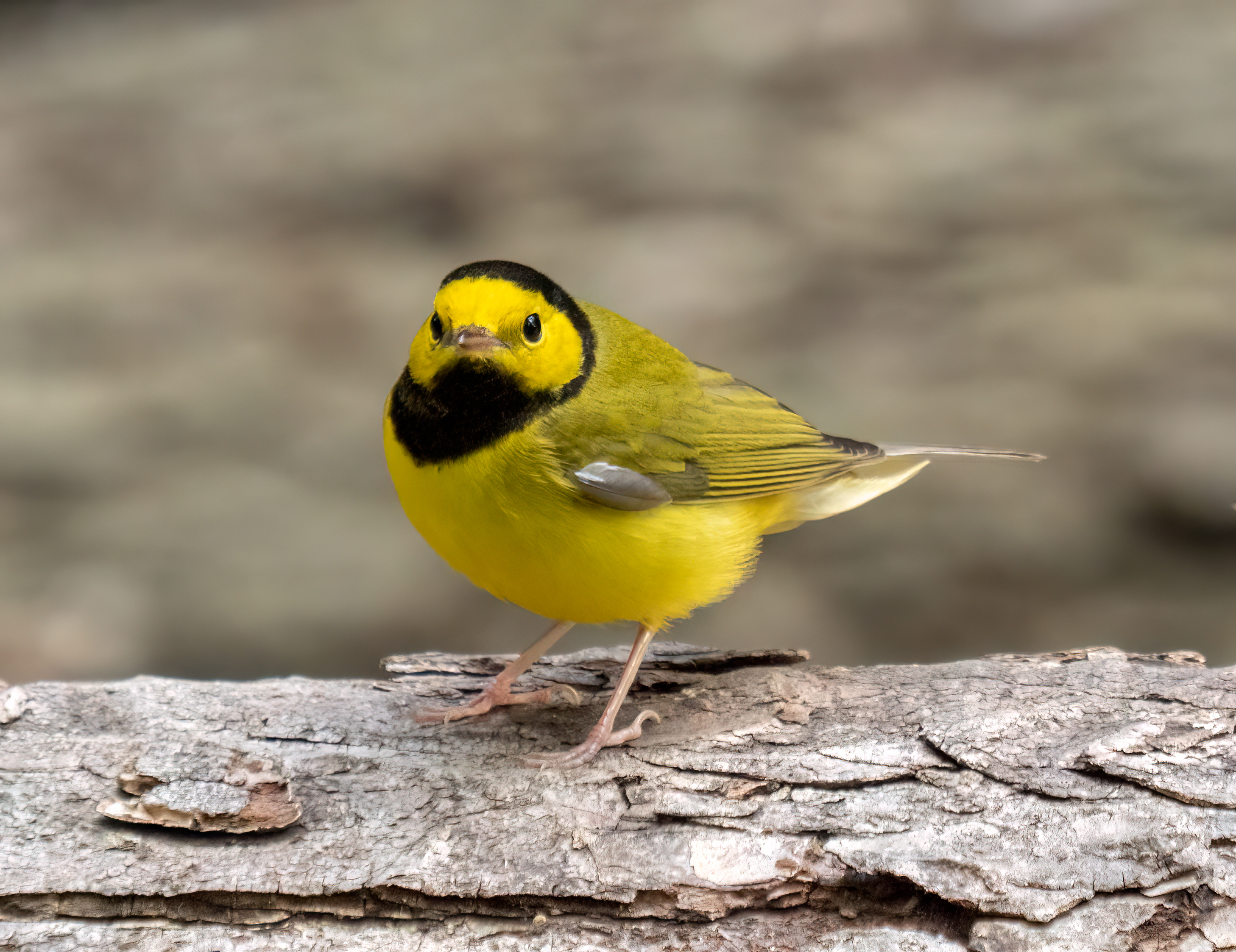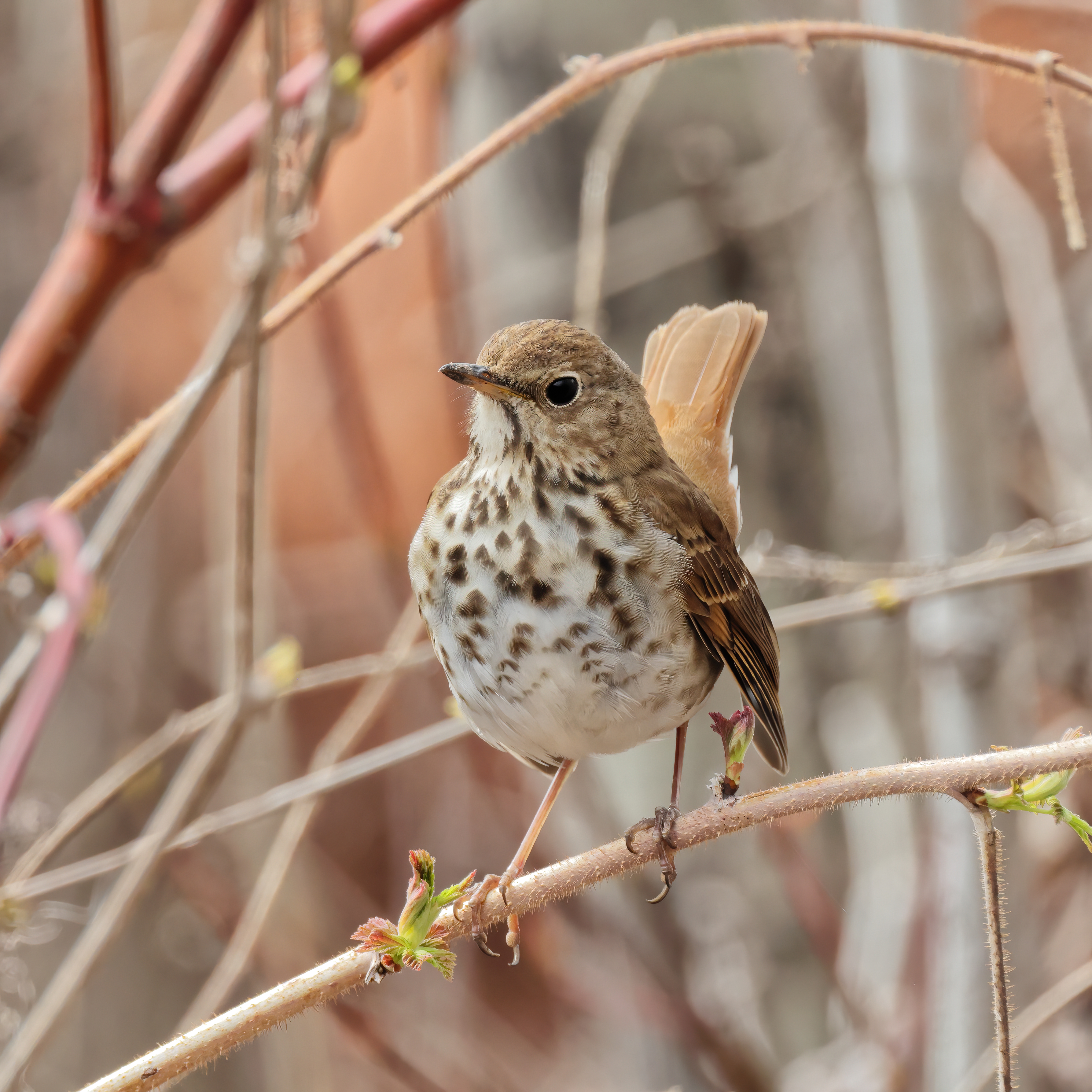
May is a big month for birding in Missouri, and the recent storms have made now a great time to get out and bird! May is when most of the migrating birds that pass through Missouri on their way north are in mid-Missouri. They are in their vibrant spring mating colors and there are (slightly) fewer leaves on the trees, making it easier to see them. It can be easy to feel like you don’t know enough or to feel intimidated, but it needn’t be so. There are some great resources to help you increase both your skill and success in birding.

Start by listening. The pros can identify birds by their calls without even seeing them. You needn’t be that skilled. Just listening is enjoyable in itself. You’ll hear birds that you can only hear once a year — some of them have really beautiful songs! Check out the song of my favorite, the Hermit Thrush! Besides, spending time in nature, just listening has repeatedly been shown to be good for mental and physical health.
If you’re like me and can barely tell the difference between a trumpeter swan and a trumpet, don’t worry! There’s an app for that! The best birding secret is The Cornell Lab of Ornithology’s Merlin Sound ID app. This tool is like “Shazam” for bird calls. It’s not really a secret, but it is FREE. Turn it on when birds are singing and it will generate a reliable list of the birds you’re hearing. Of course, the birds must be singing or calling within hearing range — thank you spring warblers, who love to sing.
You may feel like you’re cheating if you use Sound ID, but it can be a tool to improve your skills and knowledge. Using this app over the winter made me realize how often cedar waxwings were around. When I saw them on the “Sound ID” I knew to look harder for them. Once I got used to seeing them and their distinctive behavior — they fly in flocks in the winter, alighting in and taking off from treetops as a group with a sprinkling of ‘tinkling’ calls that remind me of a string of tiny bells — I started see (and hearing) them nearly every day.
I am very much a visual learner, auditory learning without visuals is one of the hardest things for me to do. The Sound ID app even helps with this, because it generates a sonogram, a sort of graph, of what it’s hearing. The sonographic image gives my visual brain something to relate to what I’m hearing. I’m still not very good at identifying birds by their calls, but I’m less bad than I used to be.
I’ll also use Sound ID to confirm a sighting. I wasn’t sure if the hawks nesting near our house were Cooper’s hawks or red-shouldered hawks. I used Sound ID to confirm that they were the much noisier red-shouldered hawks.
Cornell’s ornithology website, allaboutbirds.org is also a good place to get descriptions and sound recordings of bird species and many other details.
DBRL has several books such as “Bird Songs,” by Les Beletsky that include an electronic audio player. These have the advantage of being self-contained. These books combine the visuals of a book with audio but don’t need to be loaded onto a phone or computer and don’t require internet access.
You can find birds anywhere, but if you want to see the more elusive migrants, it’s all about location, location, location — or habitat, habitat, habitat. Take a look at one of the books the Missouri Audubon Society has written on birding in Missouri. They detail locations, what species you can expect to find there and the best times of year to go. It’s very helpful if you’re new to birding in Missouri and can save you a lot of time.
My absolute best piece of advice for seeing more birds, learning more birds and having more fun is to find someone to go with! If that person is more experienced and knowledgeable, even better! Look at event listings for the Columbia Audubon Chapter and check the Missouri Conservation Department for birding events. These are both great resources where you can take advantage of the enthusiasm and knowledge of more experienced birders.
Check out my list of more books about spring birding and migration!
Image credits: Rhododendrites, Hooded Warbler via Wikimedia Commons (license); Cephas, Catharus guttatus, via Wikimedia Commons (license)


